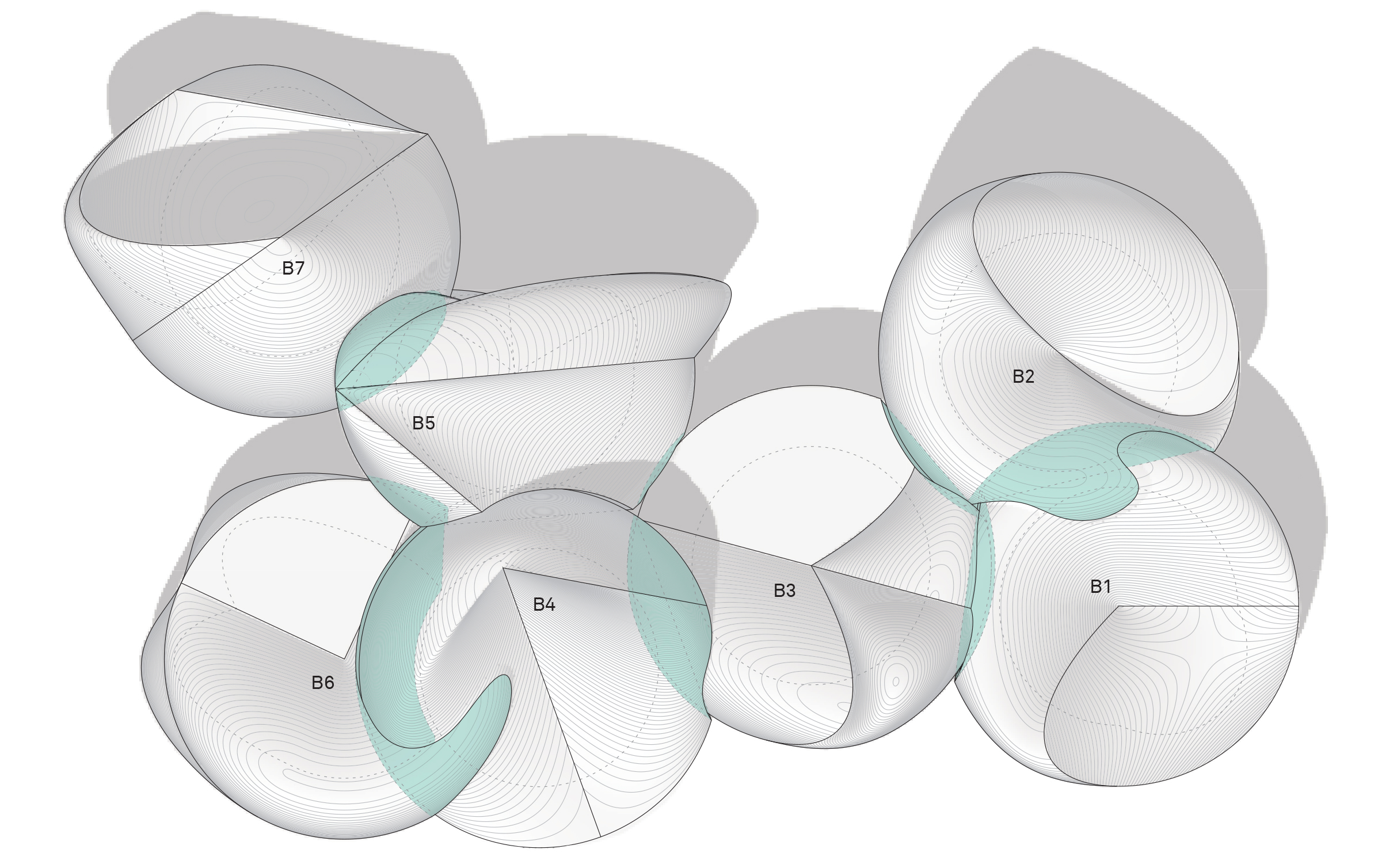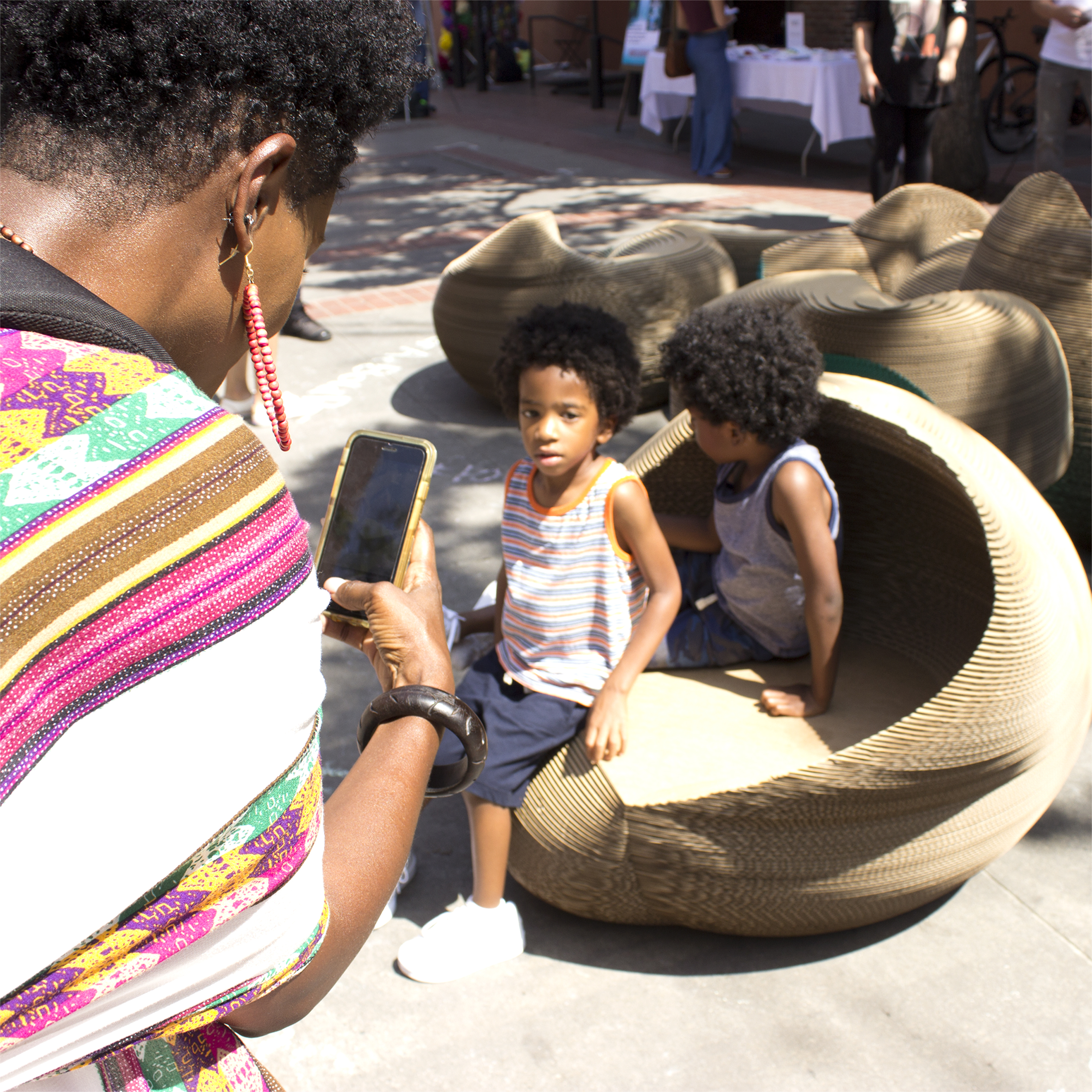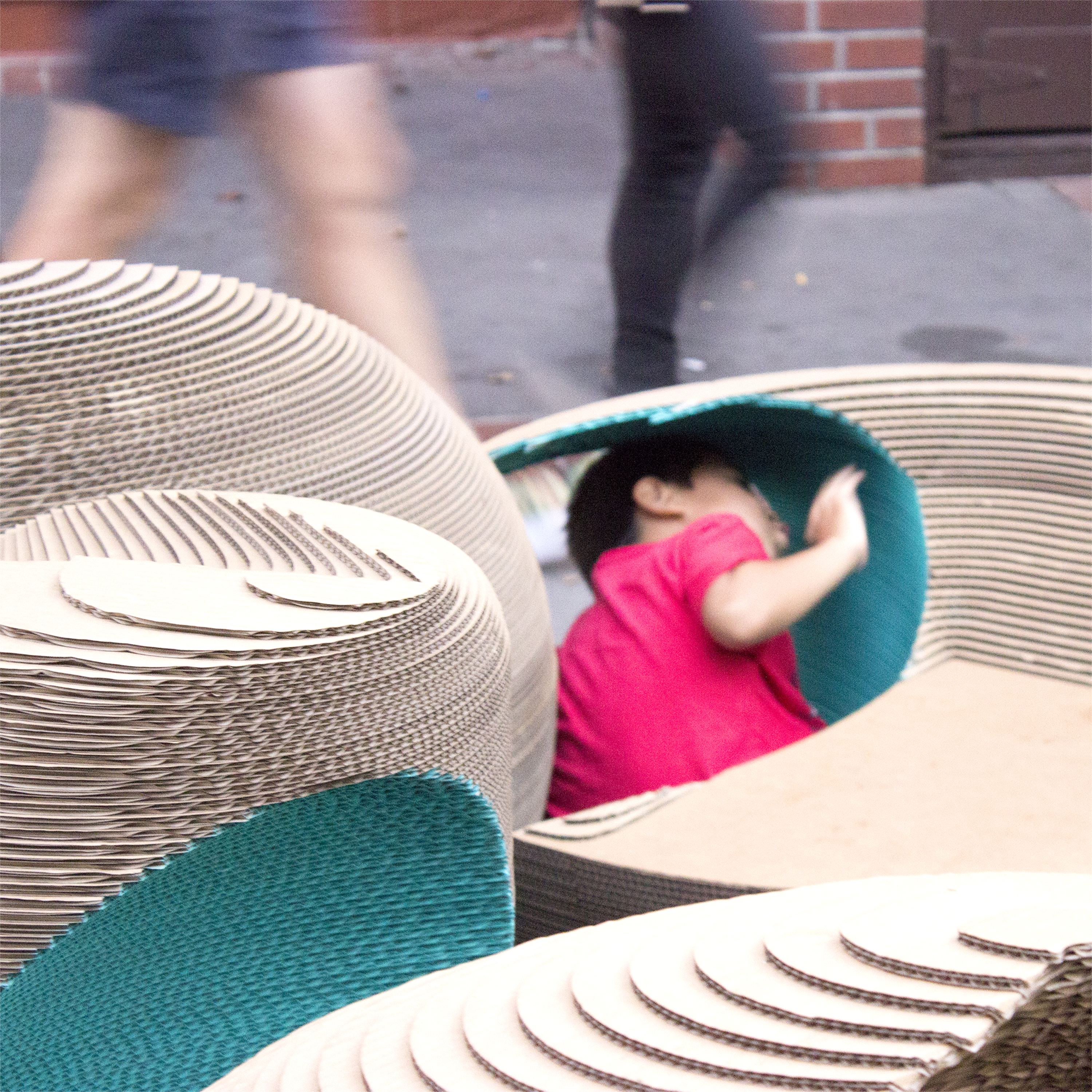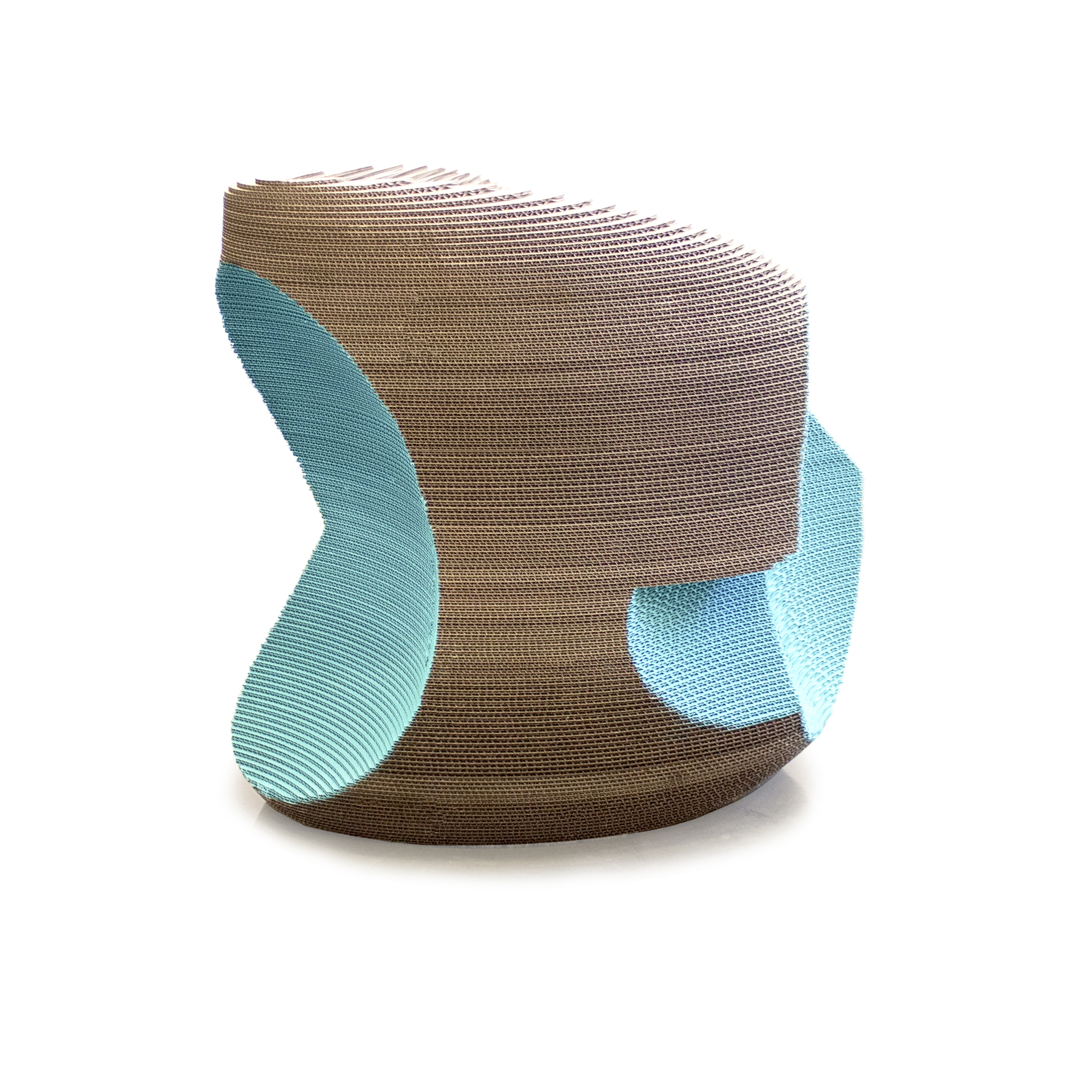Blister
public installationOut of the ground blister seven deformed spheres disrupting the public right of way; a few suggest lounging while others instill a superlative presence. This intentional act of intrusion in a place of daily communal bustle is meant to slow down the passerby in an effort to evoke a physical response. Perhaps the cluster does not evoke any response other than a modest glance, or it may in fact seduce one to make a stop. Faced with the unexpected sight of this collection of objects in an unlikely place, s/he may take the opportunity to attempt sitting, resting, lounging or merely contemplating its emergence. Upon a closer examination, one will discover that each form nests with neighboring forms resulting in multiple interactions. Each moment of intersection causes carving into one blister or another resulting in a color reveal seemingly spilling from the inside of each form.
This project attempts to utilize a humble material, cardboard, to explore its potentials in creating form and program while enforcing direct public interaction. As visitors engage with the seven blisters, the cardboard begins to show visible signs of wear and tear exposing its vulnerabilities. Although this may be discomforting it highlights possibilities for further deformation and reformation of each blister. In this way instead of a general sense of hesitation to touch and feel the unconventional objects, the public directly influences each piece causing its further deformation and rebirth.
Blister is a site-specific installation designed for the BoldPas 2017 event and made possible by the generous support of the Old Pasadena Management District and Woodbury School of Architecture. At present Blister serves as a lounge in its forever home at the Armory Center for the Arts in Pasadena.
Project Designer: Anali Gharakhani
Production Team: Anali Gharakhani, Scott Wilburn, Sylvia Abkarian, Ka Kit Chiu, Kenia Roman, Armen Janazyan.
Photographs by: Anali Gharakhani, Scott Wilburn and Richard Lucero
Special thanks to Matt Corbitt and everyone at the Making Complex at Woodbury School of Architecture whose help was vital in bringing this project to life.











